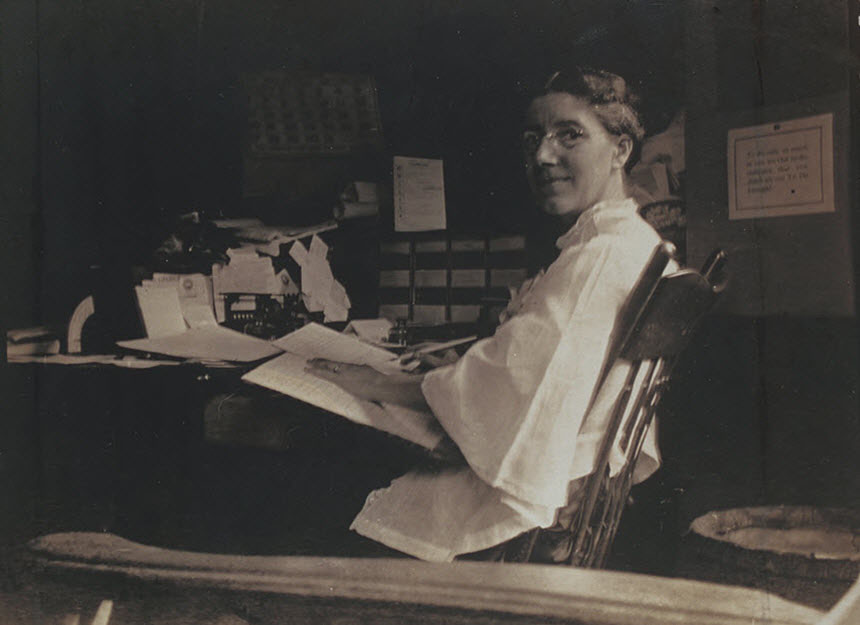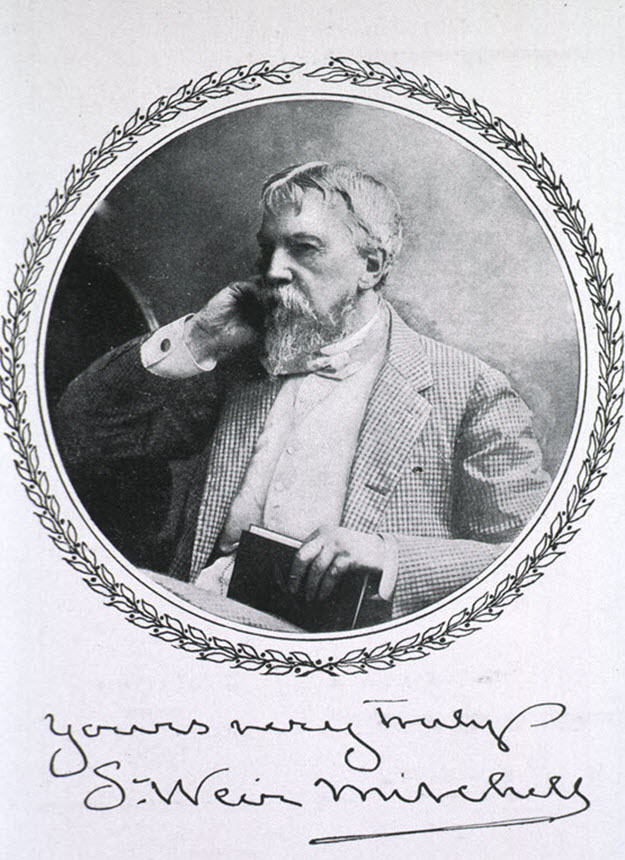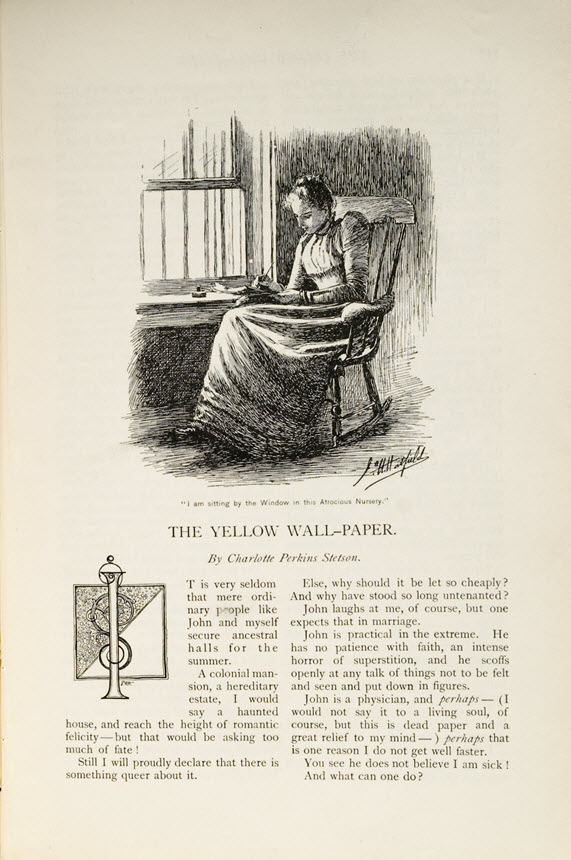In the late 19th century, at a time when women were challenging traditional ideas about gender that excluded them from political and intellectual life, medical and scientific experts drew on notions of female weakness to justify inequality between the sexes. Artist and writer Charlotte Perkins Gilman, who was discouraged from pursuing a career to preserve her health, rejected these ideas in a terrifying short story titled “The Yellow Wall-Paper.” The famous tale served as an indictment of the medical profession and the social conventions restricting women’s professional and creative opportunities.
Charlotte Perkins Gilman writing at her desk, ca. 1916–1922
Courtesy Schlesinger Library, Radcliffe Institute, Harvard University
Charlotte became an influential advocate for women’s rights and a prolific author. She wrote numerous treatises critiquing the limited role of women in society, including her most famous book, Women and Economics (1898), in which she advocated financial independence and meaningful work for women. She was especially interested in these topics having experienced profound unhappiness as a young wife and mother, eventually seeking medical advice.
Dr. S. Weir Mitchell, author and physician, 1906
Courtesy National Library of Medicine
Charlotte’s doctor, nerve specialist Dr. S. Weir Mitchell, had built an eminent medical career working with soldiers injured during the Civil War. He then focused on the treatment of women with nervous exhaustion, devising a “rest cure” in which the patient was not allowed to read, write, feed herself, or talk to others.
“The Yellow Wall-Paper,” The New England Magazine, January 1892
Courtesy National Library of Medicine
Charlotte rejected Mitchell’s prescription to give up all her intellectual pursuits, and instead picked up her pen and wrote. First published in 1892, her story, about a young woman driven mad by the rest cure, has been reprinted many times and is now considered a classic of feminist literature.
Charlotte Perkins Gilman writing at her desk, ca. 1916–1922
Courtesy Schlesinger Library, Radcliffe Institute, Harvard University
Charlotte became an influential advocate for women’s rights and a prolific author. She wrote numerous treatises critiquing the limited role of women in society, including her most famous book, Women and Economics (1898), in which she advocated financial independence and meaningful work for women. She was especially interested in these topics having experienced profound unhappiness as a young wife and mother, eventually seeking medical advice.
Dr. S. Weir Mitchell, author and physician, 1906
Courtesy National Library of Medicine
Charlotte’s doctor, nerve specialist Dr. S. Weir Mitchell, had built an eminent medical career working with soldiers injured during the Civil War. He then focused on the treatment of women with nervous exhaustion, devising a “rest cure” in which the patient was not allowed to read, write, feed herself, or talk to others.
“The Yellow Wall-Paper,” The New England Magazine, January 1892
Courtesy National Library of Medicine
Charlotte rejected Mitchell’s prescription to give up all her intellectual pursuits, and instead picked up her pen and wrote. First published in 1892, her story, about a young woman driven mad by the rest cure, has been reprinted many times and is now considered a classic of feminist literature.
In the late 19th century, at a time when women were challenging traditional ideas about gender that excluded them from political and intellectual life, medical and scientific experts drew on notions of female weakness to justify inequality between the sexes. Artist and writer Charlotte Perkins Gilman, who was discouraged from pursuing a career to preserve her health, rejected these ideas in a terrifying short story titled “The Yellow Wall-Paper.” The famous tale served as an indictment of the medical profession and the social conventions restricting women’s professional and creative opportunities.







